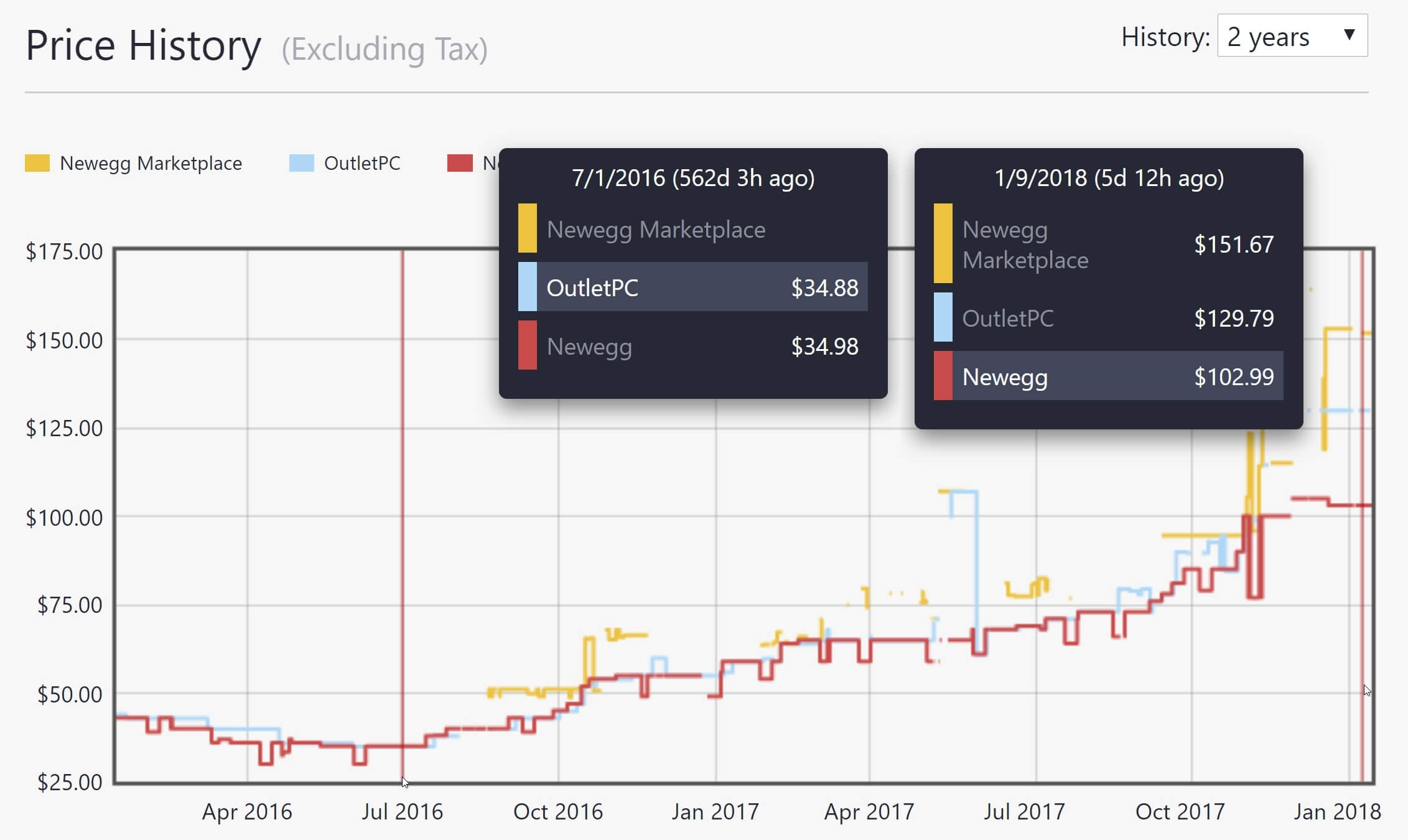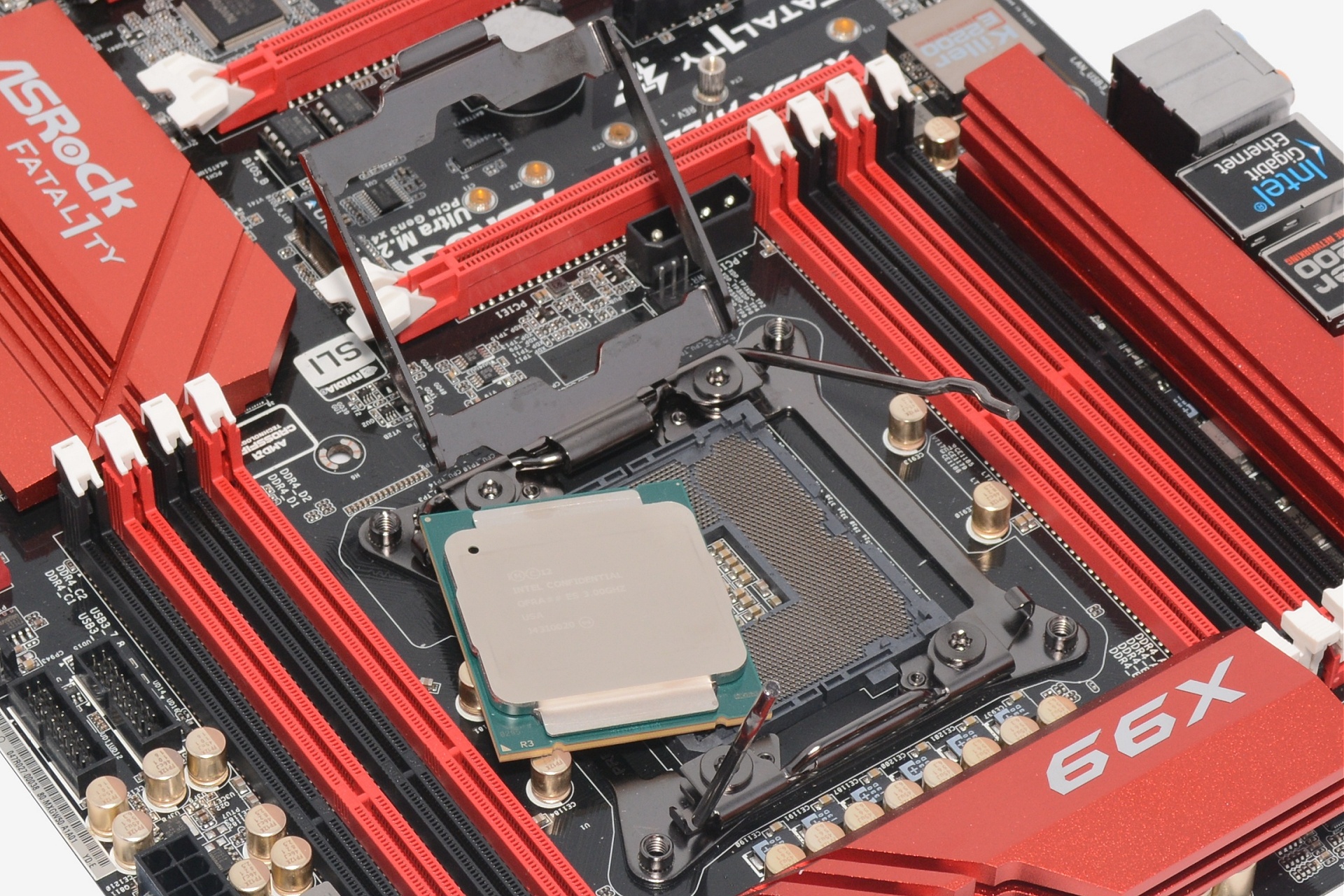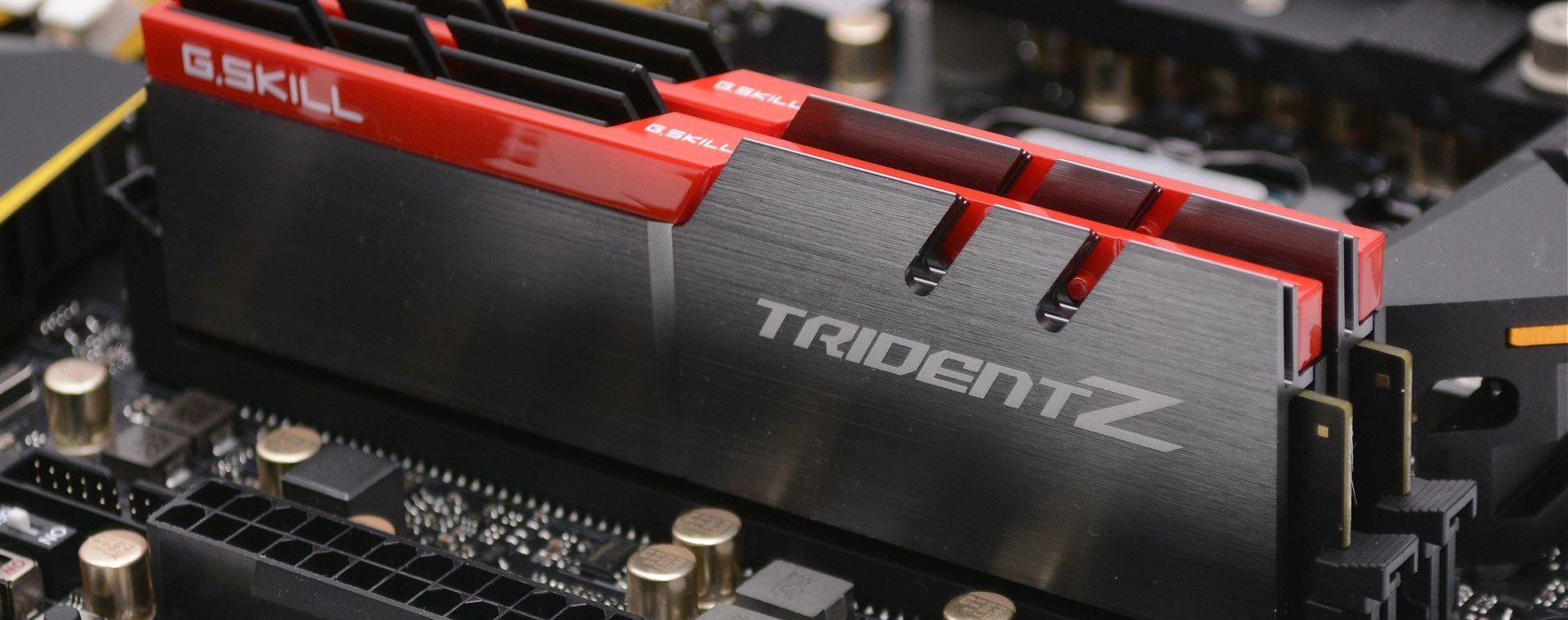The Nathan Cajucom Archivespast twelve months turned out to be some of the most exciting times we can remember for building a new computer. Last March saw the launch of Ryzen ending half a decade of AMD being 'bulldozed' by the competition. From that point forward it was busy for PC hardware, including the release of new graphics cards and Intel having a second go at things with Coffee Lake after an underwhelming Kaby Lake launch. However, for as much as there was to be excited about regarding computer hardware in 2017, there was plenty to be upset about as well.
Unfortunately, some of these problems have gotten worse and will probably continue to worsen throughout 2018, which is going to make it increasingly difficult to build a PC. Part one of this series will be dedicated discuss DDR4 memory pricing and why it's so high.
RAM pricing is currently a big issue plaguing those wanting to build a new computer or even update an old one. From July 2016 to July 2017, the market saw a 111% increase for the average selling price of DDR4 memory, and it has continued to increase since then.

An 8GB DDR4-2400 memory kit went for around $35 in 2016. A year later you could expect to pay a little over $70 for the same product. Today you're looking at an asking price of at least $90, or 170% more than what we were paying roughly 18 months ago.
But why is this? First and foremost, it's an issue of supply and demand. And while it's difficult to predict exactly when supply will improve, most reports suggest this won't happen until late 2018 when manufacturing of 64-layer and 96-layer 3D NAND flash reaches maturity. Until then, demand will continue to heavily outweight supply.
So, okay, it's a supply issue – but why? What's the main driver behind either supply decreasing or demand increasing? I believe we've been faced with a sort of double whammy.
The major DRAM suppliers shifted focus away from DDR4 production due to tight margins, investing elsewhere, while growth in the traditional desktop sector over previous years was slow and nobody wanted to pay a premium for DDR4 products, resulting in a loss of interest from manufacturers who couldn't meet their planned targets and returns.

With limited demand in late 2014 with Intel's Haswell-E and Haswell-EP range which continued in 2015 with Skylake and then again 2016 with Broadwell-E, the limited supply wasn't an issue. However, in 2017 we saw a rapid shift in market demand toward desktop computing, not just Intel but now also AMD were shipping processors supporting DDR4 memory.
Perhaps an even bigger factor, the smartphone industry has increased demand of not just DRAM but NAND as well. It's worth highlighting that it's a different type of DDR4 memory which is produced for the mobile market (Low Powered DDR4 or LP DDR4), and manufacturers such as Samsung make more profit selling LPDDR4 memory in premium smartphones.
With demand outweighing supply, prices increased and DDR4 margins were no longer tight. By mid-2017, pricing of memory modules soared significantly and unfortunately it doesn't look like manufacturers will be ramping up production any time soon.
According to market research firm DRAMeXchange, the three major DDR4 suppliers (Samsung, SK Hynix and Micron) slowed down their capacity expansions and technology migrations to maintain prices in 2018 at the same levels seen in the second half of last year, which is presumably related to their interest in sustaining strong profit margins.
The construction of new fabs is underway to help the strained supply but they won't be ready for mass production until 2019 at the earliest. It's predicted by Gartner that DDR4 pricing will crash in 2019 and history would suggest this is likely to happen as that's the cycle we go through every few years with memory pricing.
China has the potential to change things here with its aggressive approach to the semiconductor market, which could cause pricing to become even more unpredictable. Chinese memory could flood markets worldwide causing pricing to plummet. Right now there is a large number of Chinese fabs being built and it is expected that the country will take second place for investment in semiconductors this year as it equips the many new fabs that began construction in 2016 and 2017.

It's also been reported that China's National Development and Reform Commission is investigating the possibility of DRAM price-fixing between the major industry players, and this has of course been sparked by the price surge we've been talking about. If found guilty, it's hard to predict what the ramifications would or could be, so we'll have to see how that story plays out. It would appear as though they do have quite a bit of power here, as SK Hynix and Samsung both have a number of facilities in China.
So if you have a choice: hold off on building your new PC until later in 2018 (or longer) or simply accept the hit on memory pricing. PC gamers will ideally want 16GB these days and those kits cost at least $170, with premium memory priced closer to $200. Granted, the same kit would have costed around $75 in the good old days, but try not to dwell on that.
Inflated DDR4 memory pricing is only one of the problems you can expect to face when looking to upgrade or build a PC in 2018, and in the next part of this series we're going to discuss what's going on with GPU pricing and what we can expect later this year.
2017 was an exciting year for PC hardware but it wasn't all roses. The warning signs we saw are painting more difficult in 2018. In this 3-part series we discuss why building a new gaming PC is not a great idea at the moment, or at the very least, it's going to come at great expense.
 The Beatles biopic casts all the internet's boyfriends in one movie
The Beatles biopic casts all the internet's boyfriends in one movie
 NetEase to launch mobile adaptation of survival game Frostpunk tomorrow · TechNode
NetEase to launch mobile adaptation of survival game Frostpunk tomorrow · TechNode
 Prime Day outdoor deals: Save on Coleman, YETI, and more
Prime Day outdoor deals: Save on Coleman, YETI, and more
 Uber will tell you the average fare and wait time in over 10,000 cities
Uber will tell you the average fare and wait time in over 10,000 cities
 Episode 4: The Wave of the Future
Episode 4: The Wave of the Future
 TSMC nears 2nm rollout with per wafer prices climbing to $30,000 · TechNode
TSMC nears 2nm rollout with per wafer prices climbing to $30,000 · TechNode
 Best Prime Day gaming deals 2024: Save on games, accessories, and more
Best Prime Day gaming deals 2024: Save on games, accessories, and more
 Starbucks’ China rival Luckin Coffee to open first US store in New York City · TechNode
Starbucks’ China rival Luckin Coffee to open first US store in New York City · TechNode
 Skywatching is lit in May, says NASA
Skywatching is lit in May, says NASA
 Oppo signs global patent deal with Volkswagen, expanding 5G tech to connected cars · TechNode
Oppo signs global patent deal with Volkswagen, expanding 5G tech to connected cars · TechNode
 NYT Connections hints and answers for April 26: Tips to solve 'Connections' #685.
NYT Connections hints and answers for April 26: Tips to solve 'Connections' #685.
 Shanghai cracks down on illegal AI content on major platforms · TechNode
Shanghai cracks down on illegal AI content on major platforms · TechNode
 China’s Xpeng aims to double sales and break even this year: CEO · TechNode
China’s Xpeng aims to double sales and break even this year: CEO · TechNode
 Huawei to ship 700,000 Ascend AI chips in 2025 despite yield challenges · TechNode
Huawei to ship 700,000 Ascend AI chips in 2025 despite yield challenges · TechNode
 Best robot vacuum deal: Eufy Omni C20 robot vacuum and mop $300 off at Amazon
Best robot vacuum deal: Eufy Omni C20 robot vacuum and mop $300 off at Amazon
 AMD to roll out AI chip customized for China this July · TechNode
AMD to roll out AI chip customized for China this July · TechNode
 China’s Manus enters AI video race with text
China’s Manus enters AI video race with text
 The best Prime Day 2024 Samsung Galaxy deals
The best Prime Day 2024 Samsung Galaxy deals
 U.N. aims to make carbon emissions cost money at COP 25 climate talks
U.N. aims to make carbon emissions cost money at COP 25 climate talks
 China’s BYD, Geely offer big incentives in latest price war move · TechNode
China’s BYD, Geely offer big incentives in latest price war move · TechNode
Zoom's iOS app no longer sends data to FacebookThe best music to help you sleep‘The Unheard’ review: Creepy mystery that uses silence to terrifySmart goats, seizing the moment, take over town under coronavirus lockdownPanera Bread is testing Amazon One palm readersHow to livestream Alabama vs. San Diego State in Sweet 16'The Lost King' review: Sally Hawkins and Stephen Frears bring whimsy to royal rompHow to last longer in bedHighly relatable Twitter meme compares the start of March to its end'Quordle' today: See each 'Quordle' answer and hints for March 25ChatGPT knows Elon Musk better than Elon Musk knows himself‘The Unheard’ review: Creepy mystery that uses silence to terrifyThe ChatGPT bug exposed more private data than previously thoughtTwitter's '10 Macbooks' hacker continues to run amok, scamming on the platformBing vs. Bard: The ultimate AI chatbot showdownFormer astronaut more worried about dying in hospital than on a rocketIt's never too early to eat lunchWhat to do when you can't sleepTwitter will take your blue checkmark on April 1 if you don’t payHow to adapt if you've moved in with your parents due to coronavirus Taylor Swift won her fourth Grammy for Album of the Year, makes history Taylor Swift's 'The Tortured Poets Department': Everything we know Wordle today: The answer and hints for February 6 Wild Desire by Pedro Lemebel Chasing It Down the Elevator Shaft to the Subconscious: Or, Getting Hypnotized by Jeremy Butman Making of a Poem: Maureen N. McLane on "Haptographic Interface" by Maureen N. McLane Those That Are Fools: At Clownchella by Rob Goyanes NYT's The Mini crossword answers for February 6 At the Great Florida Bigfoot Conference by Jason Katz Here's who we think will fly to the moon with SpaceX Freely, a new free streaming service, is coming to the UK Making of a Poem: Patty Nash on “Metropolitan” by Patty Nash Joe Rogan signs new $250 million, multi The complete list of winners at the 2024 Grammy Awards main ceremony Sad People Who Smoke: On Mary Robison by Adam Wilson Tinder releases new warnings to stop inappropriate messages Wordle today: The answer and hints for February 5 On Being Warlike by Joyelle McSweeney RIP Billymark's by Sophie Haigney “Choose Hope or Despair”: On John Shoptaw by Jenny Odell
2.285s , 10133.46875 kb
Copyright © 2025 Powered by 【Nathan Cajucom Archives】,Unobstructed Information Network